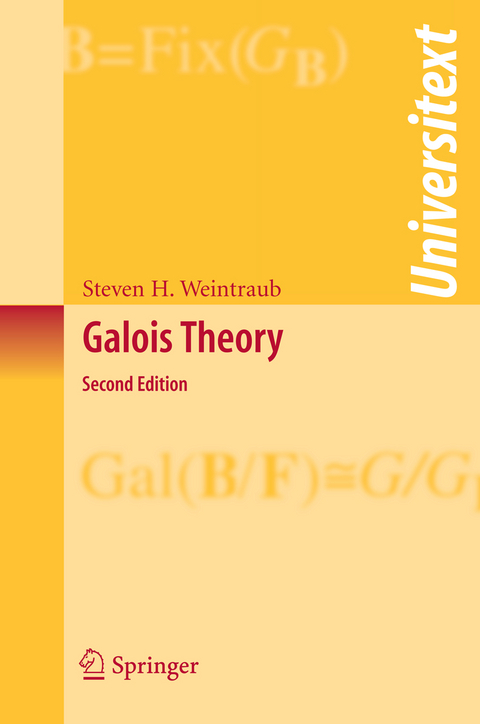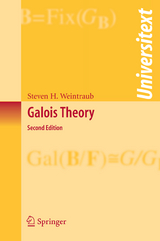Galois Theory
Seiten
2008
|
2nd ed. 2009
Springer-Verlag New York Inc.
978-0-387-87574-3 (ISBN)
Springer-Verlag New York Inc.
978-0-387-87574-3 (ISBN)
This is a textbook on Galois theory. Galois theory has a well-deserved re- tation as one of the most beautiful subjects in mathematics. In this chapter we give a number of examples in Galois theory, even before our terms have been properly de?ned. We develop ?eld theory, with our goal being the Fundamental Theorem of Galois Theory (the FTGT).
This is a textbook on Galois theory. Galois theory has a well-deserved re- tation as one of the most beautiful subjects in mathematics. I was seduced by its beauty into writing this book. I hope you will be seduced by its beauty in reading it. This book begins at the beginning. Indeed (and perhaps a little unusually for a mathematics text), it begins with an informal introductory chapter, Ch- ter 1. In this chapter we give a number of examples in Galois theory, even before our terms have been properly de?ned. (Needless to say, even though we proceed informally here, everything we say is absolutely correct.) These examples are sort of an airport beacon, shining a clear light at our destination as we navigate a course through the mathematical skies to get there. Then we start with our proper development of the subject, in Chapter 2. We assume no prior knowledge of ?eld theory on the part of the reader. We develop ?eld theory, with our goal being the Fundamental Theorem of Galois Theory (the FTGT). On the way, we consider extension ?elds, and deal with the notions of normal, separable, and Galois extensions. Then, in the penul- mate section of this chapter, we reach our main goal, the FTGT.
This is a textbook on Galois theory. Galois theory has a well-deserved re- tation as one of the most beautiful subjects in mathematics. I was seduced by its beauty into writing this book. I hope you will be seduced by its beauty in reading it. This book begins at the beginning. Indeed (and perhaps a little unusually for a mathematics text), it begins with an informal introductory chapter, Ch- ter 1. In this chapter we give a number of examples in Galois theory, even before our terms have been properly de?ned. (Needless to say, even though we proceed informally here, everything we say is absolutely correct.) These examples are sort of an airport beacon, shining a clear light at our destination as we navigate a course through the mathematical skies to get there. Then we start with our proper development of the subject, in Chapter 2. We assume no prior knowledge of ?eld theory on the part of the reader. We develop ?eld theory, with our goal being the Fundamental Theorem of Galois Theory (the FTGT). On the way, we consider extension ?elds, and deal with the notions of normal, separable, and Galois extensions. Then, in the penul- mate section of this chapter, we reach our main goal, the FTGT.
Steven H. Weintraub is a Professor of Mathematics at Lehigh University and author of seven books. This book grew out of a graduate course he taught at Lehigh. He is also the author of Algebra: An Approach via Module Theory (with W. A. Adkins).
to Galois Theory.- Field Theory and Galois Theory.- Development and Applications of Galois Theory.- Extensions of the Field of Rational Numbers.- Further Topics in Field Theory.- Transcendental Extensions.
| Reihe/Serie | Universitext |
|---|---|
| Zusatzinfo | XIV, 212 p. |
| Verlagsort | New York, NY |
| Sprache | englisch |
| Maße | 155 x 235 mm |
| Themenwelt | Mathematik / Informatik ► Mathematik ► Algebra |
| Mathematik / Informatik ► Mathematik ► Arithmetik / Zahlentheorie | |
| ISBN-10 | 0-387-87574-3 / 0387875743 |
| ISBN-13 | 978-0-387-87574-3 / 9780387875743 |
| Zustand | Neuware |
| Informationen gemäß Produktsicherheitsverordnung (GPSR) | |
| Haben Sie eine Frage zum Produkt? |
Mehr entdecken
aus dem Bereich
aus dem Bereich
Buch | Softcover (2022)
Springer Spektrum (Verlag)
CHF 55,95




